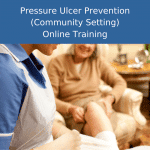Description
Epilepsy Awareness online training
This Epilepsy Awareness online training course is designed for Care Workers who work with clients suffering with Epilepsy. This e-learning course will provide candidates with knowledge on the main effects of epilepsy and the importance of supporting service users to take their prescribed medication.
- Developed by professionals
- Accredited by The CPD Accreditation Group
- 100% online, learn at your own time and pace
- Translates into over 100 different languages
- Instant certificate downloaded
Who is it for?
This training is suitable for all staff working within Adult Health and Social Care.
Online training about epilepsy awareness is helpful for many people, especially those who might see someone having a seizure.
Let’s break down who can benefit the most:
- People in care jobs: Like nurses, healthcare helpers, social workers, childcare workers, and teachers.
- Those who work with the public: Such as lifeguards, bus drivers, security guards, and anyone who deals with the public often.
- Family and friends of people with epilepsy: Knowing about seizures can help them support their loved ones better.
- Anyone curious about epilepsy: This training is good for anyone who wants to be ready in case they witness a seizure.
When will I get my certificate?
Once you have successfully passed our course you will be able to download and print your certificate immediately.
As this course has been accredited by the CPD Group your certificate will contain the CPD logo and unique reference number.
Epilepsy Awareness Training Course Outline:
In this epilepsy awareness training, you will learn:
What Epilepsy is and how it is caused:
- Explore the definition and underlying causes of epilepsy.
- Understand the neurological factors and potential triggers associated with epilepsy development.
Recognising different types of seizures and their presentations:
- Identify and distinguish at least three common types of seizures.
- Learn to recognize the unique signs and symptoms exhibited during each type of seizure.
Safe care techniques for individuals experiencing seizures:
- Acquire knowledge and skills to provide appropriate care during a seizure event.
- Understand best practices for ensuring the safety and well-being of someone having a seizure.
Documentation requirements following a seizure:
- Learn the essential details and procedures for documenting seizure incidents accurately.
- Understand the significance of documenting important information such as seizure duration, observed symptoms, and any interventions provided.
Understanding the impact of epilepsy on behavior:
- Explore how epilepsy can influence an individual’s behavior and emotional well-being.
- Gain insight into the potential behavioral changes and cognitive effects that may occur as a result of epilepsy.
By completing this epilepsy awareness training, you will be equipped with the knowledge and skills to understand epilepsy, identify different types of seizures, provide safe care during seizure events, document incidents appropriately, and recognize the behavioral impact of epilepsy on individuals.
Key Points
- What Epilepsy is and how it is caused.
- How to recognise at least three types of seizure and how they present.
- Know how to safely care for someone having a seizure.
- What documentation is required following a seizure.
- Understand how behaviour changes may affect the individual as a result of epilepsy.
Learning Outcome
If you take an online epilepsy course, here are some things you can learn:
- What epilepsy is: Understand what epilepsy is, how common it is, and the different types of seizures.
- Spotting seizures: Learn to recognise different kinds of seizures and what makes each one unique.
- First aid for seizures: Know the right steps to help someone having a seizure, and what to avoid doing.
- Keeping things safe: Find out how to make a safe space for someone having a seizure and reduce risks.
- How epilepsy affects life: Learn about the changes epilepsy can bring to a person’s life, including its impact on their social life and emotions.
Online Epilepsy Awareness Training vs Face to Face Epilepsy Training
Online Epilepsy Awareness Training:
Pros:
- Convenience: Fits easily into your schedule, accessible anytime, anywhere.
- Cost-effective: Usually cheaper than face-to-face options.
- Self-paced: Learn at your own speed and revisit modules if needed.
Cons:
- Limited interaction: No opportunity to ask questions directly to an instructor or practice skills.
- Less engaging: Can be harder to stay focused compared to a live session.
- May not be suitable for everyone: People who prefer a more interactive learning environment might find it less effective.
Face-to-Face Epilepsy Awareness Training:
Pros:
- Interaction: Provides opportunities to ask questions and discuss specific scenarios.
- Engagement: Live session with an instructor can be more engaging and interactive.
- Practical skills: May include hands-on practice, like recognizing different seizure types.
Cons:
- Scheduling: Requires attending a specific time and location, which might be inconvenient.
- Cost: Generally more expensive than online options.
- Limited availability: May not be offered frequently in your area.
Recommendation:
- For a basic understanding: If you need a general overview of epilepsy and seizure first aid, online training is a good option.
- For those needing practical skills: If your role requires recognising seizures or providing first aid, face-to-face training with hands-on practice is preferable.
- Consider your learning style: If you learn best through interaction and discussion, go for face-to-face. If you prefer self-paced learning, online might be better.
Ultimately, the best choice depends on your individual needs and learning style.





